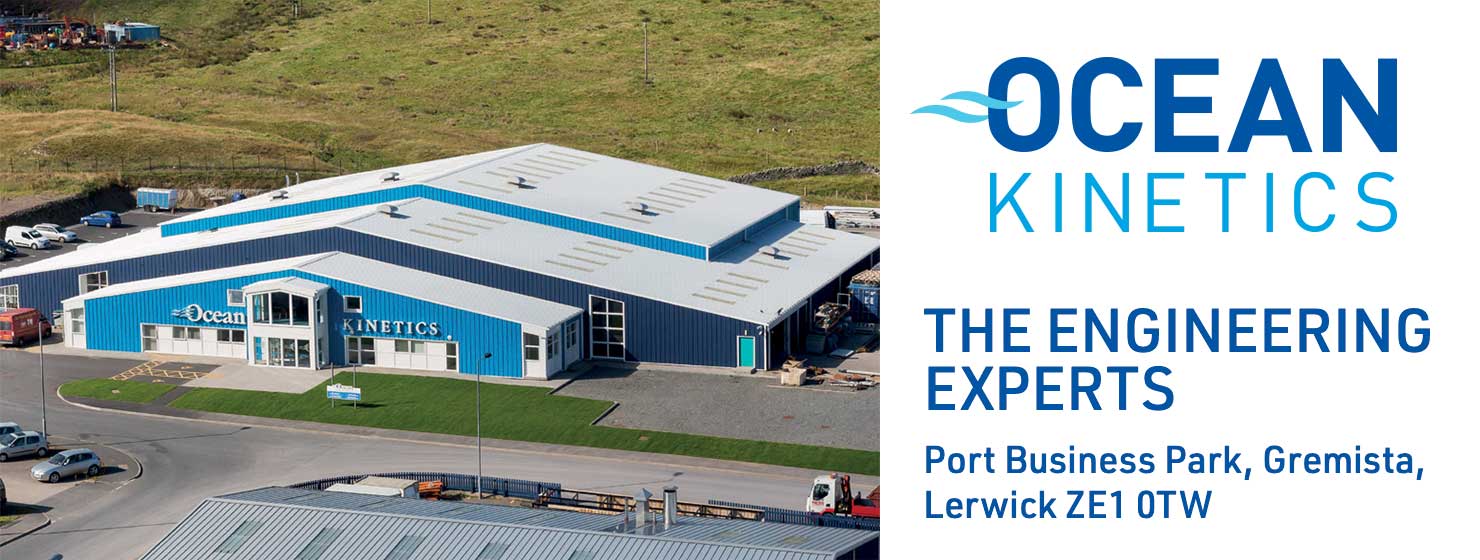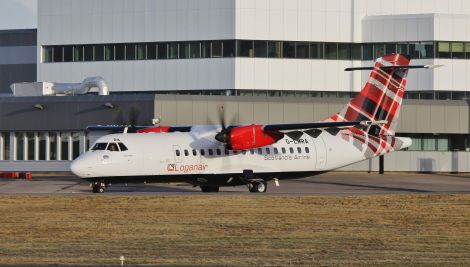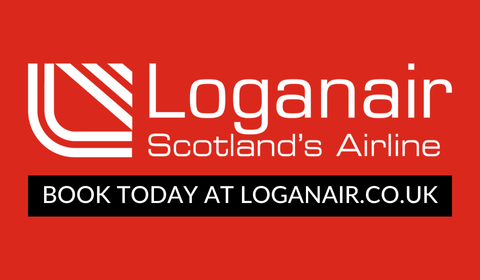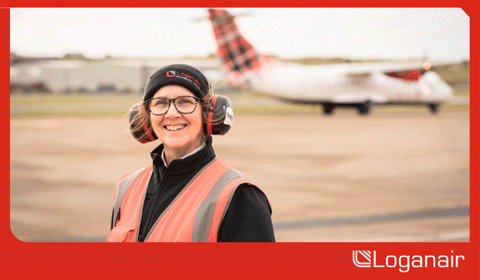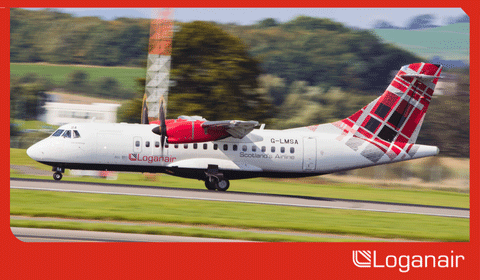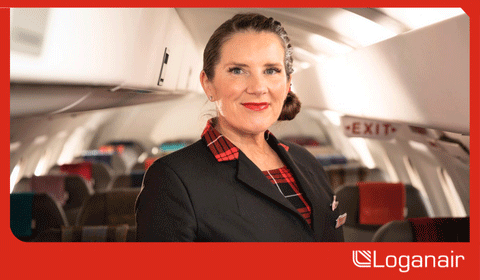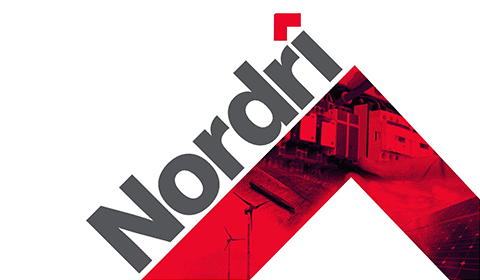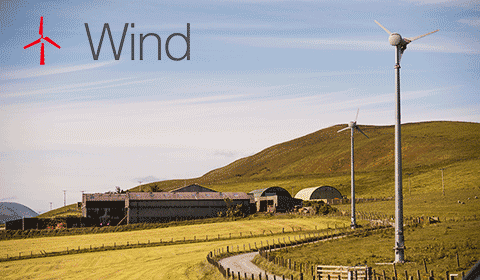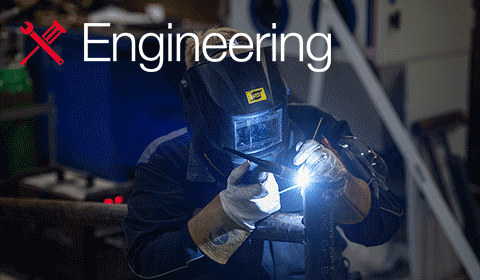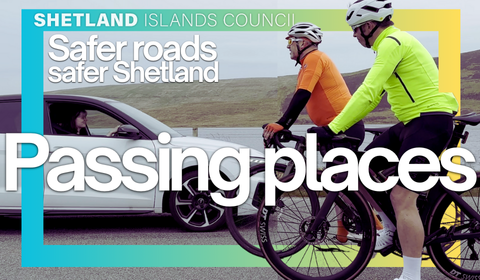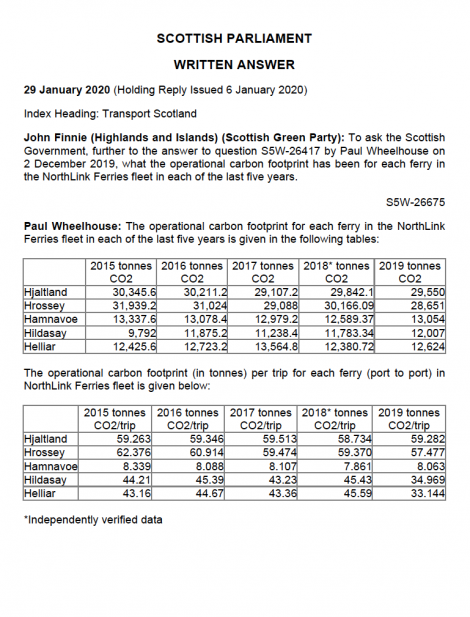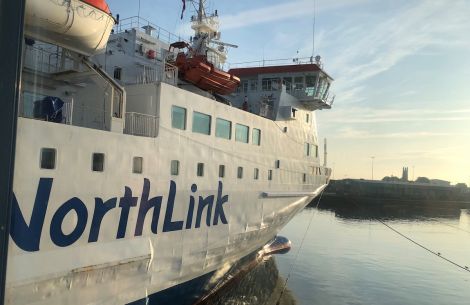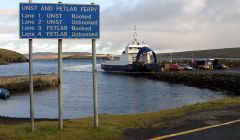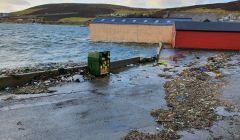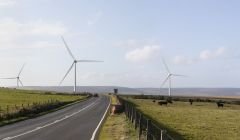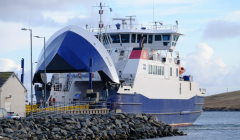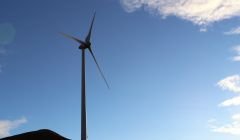Climate / Taking the plane turns out to be better for the climate
Analysis of carbon emissions of Shetland’s external transport links comes up with surprising result
FLYING rather than taking the ferry when travelling between Shetland and the Scottish mainland appears to be the more climate-friendly mode of transport, it has emerged.
This somewhat surprising conclusion has come after a Shetland News investigation into the carbon emission data of Loganair’s fleet of aircraft and NorthLink’s passenger and cargo ferries.
With the climate emergency accepted and now firmly established on the agenda of government, industry and society at large, people increasingly want to know what impact their behaviour has on the climate in order to make informed decisions.
The analysis suggests that the average carbon footprint for a return flight between Sumburgh and Aberdeen on a Loganair operated ATR plane is about 50 kilos of carbon dioxide emissions per person, whereas doing the same journey on one of NorthLink’s ferries accounts to between 160 and 240 kilos of CO2 emissions per person.
The findings were welcomed by Loganair, while NorthLink was slow to respond and appeared unwilling and somewhat unprepared to be drawn into a discussion about the environmental cost of travelling.
The airline’s chief executive Jonathan Hinkles said: “Flying is already the method of transport to and from Shetland which has by far the least impact on the environment – emissions per passenger by ferry are up to five times higher than a Loganair flight.
“In the rush to condemn aviation’s environmental effects, many folk seem to forget the emissions from the maritime industry are far higher; we need to address both.”
NorthLink’s contract compliance manager Robert Smith pointed out that there is currently no “industry certified formula” to establish a carbon footprint figure per person.
Become a member of Shetland News
He added: “We provide lifeline services to/from the Northern Isles for significant amounts of time sensitive and necessary freight as well as passengers unlike other carriers.”
The findings of the Shetland News research however also correspond closely with those of a 2012 scientific study into the implications of CO2 emissions for Orkney’s external islands connections.
One of its authors, Dr Alf Baird, told Shetland News that the passenger ferries Hjaltland and Hrosseywere blasting out a staggering 10 tonnes of CO2 per hour into the air when operating at top speed of 24 knots.
Dr Baird was asked by Shetland News to give his expert opinion after it proved near impossible to obtain detailed information from the ferry operator itself.
Calculation
In a parliamentary response to a question by Green MSP John Finnie Scottish islands minister Paul Wheelhouse said in early December that NorthLink Ferries had reduced its operational carbon footprint by an average of 17.1 per cent across its passenger vessels compared to 2012, and that all vessels have been operating on low sulphur marine gas oil since January 2015.
However, the minister didn’t mention what a 17.1 per cent reduction was based on and what this figure meant in actual numbers. This vital piece of information was only provided after a follow-up question from the Green MSP (see image).
In 2019 NorthLink’s fleet of three passenger vessels plus two freight boats had an overall carbon footprint of almost 96,000 tonnes. In comparison, that is more than the Lerwick power station (77,500 tonnes) or Sullom Voe Terminal (77,320 tonnes) but less than Shetland Gas Plant (239,000 tonnes – SEPA figures).
Emission figures from shipping are not included in UK local authority and regional carbon emission statistics which already show that Shetland has the highest per head carbon footprint in the country.
The two sister vessels Hjaltland and Hrossey ploughing the water between Lerwick, Kirkwall and Aberdeen on most days are emitting around 30,000 tonnes of carbon dioxide each every year.
According to Dr Baird, the environmentally most damaging legs of the route were from Aberdeen to Kirkwall and from Lerwick to Kirkwall, when the ferries were operating a top speed to stick to the tight timetable, while emissions were halved to 5.3 tonnes of CO2 per hour on the other legs when the cruising speed is 16 knots.
Based on figures that suggest NorthLink carry 125,000 passengers per year between Lerwick and Aberdeen, each passenger would have a carbon footprint of 480 kilos. Considering that there is freight as well as cars on the ferries, it depends on which methodology one applies to come to a credible figure.
Applying a 50/50 split between freight and passengers, an individual’s carbon dioxide emissions would reduce to 240 kilos for each return journey.
If splitting the total emissions into three equal shares for freight, cars and passengers, as the 2012 Orkney study does, then a return journey without a car would cost 160 kilos in CO2 emissions, however when taking a car on the ferry this doubles to 320 kilos.
In comparison, Loganair’s new 70 seat-ATR aircrafts are said to burn between 700 and 800 kilos of fuel on the same journey releasing up to 2.5 tonnes of CO2 into the air. Based on an average 70 per cent occupancy, the individual carbon footprint is about 50 kilos.
Loganair said these figures are between 30 and 45 per cent lower than those of the company’s current Saab 340 and Saab 2000 aircraft which are in the process of being replaced with ATR aircraft.
Environmental improvements
In fairness to NorthLink, the company is working hard to further reduce its carbon footprint but there is relatively little the company can do within the lifeline contract. With the ships now being owned by the Scottish Government and not up for replacement before 2032, the company has no choice but to operate the Northern Isles contract using these ships.
The government’s own national transport strategy, published at the end of January and sub-titled ‘protecting our climate and improving lives” makes depressing reading when it comes to decarbonising Scotland’s ferry fleet.
On page 53 the report says: “For ferries, there is currently no available low/zero carbon alternative to fossil fuels.
“There is potential for all-electric ferries on shorter routes with smaller vessels but for the longer routes, with larger and heavier vessels, and higher energy requirements, other options will need to be explored.”
NorthLink’s Robert Smith said that changing the fleet’s antifouling paint systems had improved fuel efficiency and hence reduced CO2 emissions.
The company is also ready to connect the Hamnavoe to Orkney’s electrical grid to use excess wind energy while berthed at Stromness and thus reducing auxiliary engine fuel consumption in port.
Smith continued: “We have identified several key areas where we believe savings in energy can be made and therefore reduce the fuel consumed.”
These include: –
- additional shore power installations for NorthLink vessels in Aberdeen and Shetland;
- using waste heat generated within the main propulsion plants to generate electricity;
- excess electrical generation to be harnessed and used to supply battery packs on board to increase the efficiency of the diesel engines. The power would be used to supply some or all of the accommodation, catering, retail load whilst in port.
Smith added: “Serco are currently considering setting carbon emission reduction targets to align with science and recognise the need for urgent action to address both the climate and wider environmental emergency.
But according to ferry expert Alf Baird, significant savings – environmentally and financially – could be made by deploying different vessels.
“The needless separation of freight and passengers should be avoided,” he said. “This would provide for significant economies of scale and hence lower cost.”
The academic said the ideal “workhorse” for the route is readily available from marine designer NAOS, which have a standard optimised hull design of 186 metres in length and would offer more capacity for passengers and all cargo than NorthLink’s current fleet put together.
“Two of these European standard 186m ropax vessels could therefore replace the current four vessels employed by NorthLink [on the Shetland link] (2 x ropax and 2 x roro) and at the same time offer even more cargo, car and pax capacity,” Baird said.
“The larger ropax ferries are designed for 24-hour operation hence could each do up to one round trip per day in peak season between Aberdeen-Kirkwall-Lerwick, reverting to one single trip/day in winter.”
Become a member of Shetland News
Shetland News is asking its readers to consider paying for membership to get additional perks:
- Removal of third-party ads;
- Bookmark posts to read later;
- Exclusive curated weekly newsletter;
- Hide membership messages;
- Comments open for discussion.
If you appreciate what we do and feel strongly about impartial local journalism, then please become a member of Shetland News by either making a single payment, or setting up a monthly, quarterly or yearly subscription.



